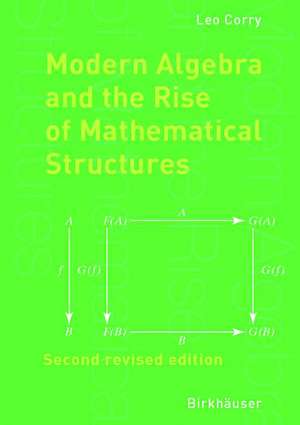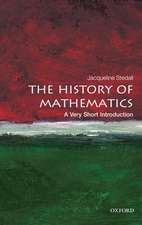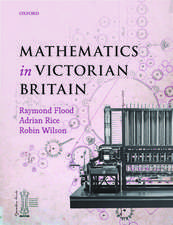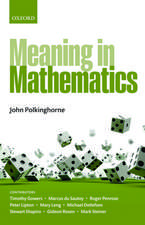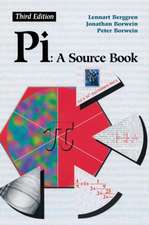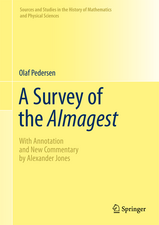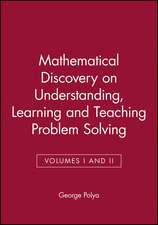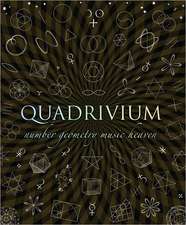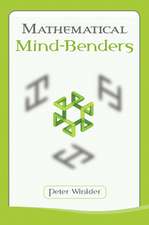Modern Algebra and the Rise of Mathematical Structures
Autor Leo Corryen Limba Engleză Paperback – 27 noi 2003
First published in the series Science Networks Historical Studies, Vol. 17 (1996).
In the second rev. edition the author has eliminated misprints, revised the chapter on Richard Dedekind, and updated the bibliographical index.
Preț: 416.12 lei
Preț vechi: 520.15 lei
-20% Nou
Puncte Express: 624
Preț estimativ în valută:
79.62€ • 83.14$ • 65.75£
79.62€ • 83.14$ • 65.75£
Carte tipărită la comandă
Livrare economică 11-17 aprilie
Preluare comenzi: 021 569.72.76
Specificații
ISBN-13: 9783764370022
ISBN-10: 3764370025
Pagini: 472
Ilustrații: XVIII, 452 p.
Dimensiuni: 170 x 244 x 25 mm
Greutate: 0.66 kg
Ediția:2nd revised ed. 2004
Editura: Birkhäuser Basel
Colecția Birkhäuser
Locul publicării:Basel, Switzerland
ISBN-10: 3764370025
Pagini: 472
Ilustrații: XVIII, 452 p.
Dimensiuni: 170 x 244 x 25 mm
Greutate: 0.66 kg
Ediția:2nd revised ed. 2004
Editura: Birkhäuser Basel
Colecția Birkhäuser
Locul publicării:Basel, Switzerland
Public țintă
ResearchCuprins
Introduction: Structures in Mathematics.- One: Structures in the Images of Mathematics.- 1 Structures in Algebra: Changing Images.- 2 Richard Dedekind: Numbers and Ideals.- 3 David Hilbert: Algebra and Axiomatics.- 4 Concrete and Abstract: Numbers, Polynomials, Rings.- 5 Emmy Noether: Ideals and Structures.- Two: Structures in the Body of Mathematics.- 6 Oystein Ore: Algebraic Structures.- 7 Nicolas Bourbaki: Theory ofStructures.- 8 Category Theory: Early Stages.- 9 Categories and Images of Mathematics.- Author Index.
Textul de pe ultima copertă
The notion of a mathematical structure is among the most pervasive ones in twentieth-century mathematics. Modern Algebra and the Rise of Mathematical Structures describes two stages in the historical development of this notion: first, it traces its rise in the context of algebra from the mid-nineteenth century to its consolidation by 1930, and then it considers several attempts to formulate elaborate theories after 1930 aimed at elucidating, from a purely mathematical perspective, the precise meaning of this idea.
Part one dicusses the process whereby the aims and scope of the discipline of algebra were deeply transformed, turning it into that branch of mathematics dealing with a new kind of mathematical entities: the "algebraic structures". The transition from the classical, nineteenth-century, image of the discipline to the thear of ideals, from Richard Dedekind to Emmy Noether, and culminating with the publication in 1930 of Bartel L. van der Waerden's Moderne Algebra. Following its enormous success in algebra, the structural approach has been widely adopted in other mathematical domains since 1930s. But what is a mathematical structure and what is the place of this notion within the whole fabric of mathematics? Part Two describes the historical roots, the early stages and the interconnections between three attempts to address these questions from a purely formal, mathematical perspective: Oystein Ore's lattice-theoretical theory of structures, Nicolas Bourbaki's theory of structures, and the theory of categories and functors.
Part one dicusses the process whereby the aims and scope of the discipline of algebra were deeply transformed, turning it into that branch of mathematics dealing with a new kind of mathematical entities: the "algebraic structures". The transition from the classical, nineteenth-century, image of the discipline to the thear of ideals, from Richard Dedekind to Emmy Noether, and culminating with the publication in 1930 of Bartel L. van der Waerden's Moderne Algebra. Following its enormous success in algebra, the structural approach has been widely adopted in other mathematical domains since 1930s. But what is a mathematical structure and what is the place of this notion within the whole fabric of mathematics? Part Two describes the historical roots, the early stages and the interconnections between three attempts to address these questions from a purely formal, mathematical perspective: Oystein Ore's lattice-theoretical theory of structures, Nicolas Bourbaki's theory of structures, and the theory of categories and functors.
Caracteristici
Updated, improved, and revised
